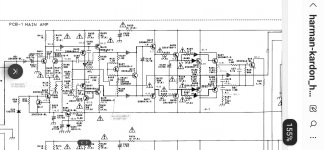I think there are two different philosophies going on here. The Audio Note ‘gentlemen’s’ amp tested in Stereophile a while back offered c. 10W out into 8 ohms and not much above that showed distortion at >2-3%. It won ‘Amplification Product of the Year’. The asking price IIRC is c. $19 000. And they aren’t the only ones offering this kind of stuff. Even the Linn Klout at >200 W into 8 ohms isn’t much better than 0.5% although unusually the PSRR is quite good, unlike a lot of stuff that clearly has layout and wiring programs evidenced by the noise floors that are full of mains harmonics. IMD performance also an issue in a lot of these offerrings.Yes of course, that's why the professionals always try to copy the DIY designs.
Why are commercial amps like this being built and sold? One reason is these companies peddle the ‘feedback is bad’ mantra and their whole marketing focus is on dissing good engineering and bigging up zero feedback amplifiers with their manifest faults. Great if that floats your boat, but not great if your mindset is ‘a piece of wire with gain’.
So, no, most commercial audio companies won’t be copying some of the cutting edge stuff being done in the DIY space and that’s a loss for audiophiles everywhere IMV.
It's remarkable that you're putting forward the Wolverine here. Ostripper based the Wolverine on the HK680, so it is debatable whether the Wolverine is a DIY-design. In any case, it is a bad idea to compare production units with amplifiers optimized under laboratory conditions that are incompletely constructed. Even the measuring setup was 'optimized' to report the lowest possible THD. Something Bonsai strongly opposed to in another thread.
https://www.diyaudio.com/community/search/1613931/?q=680&c[users]=ostripper&o=relevance
The only Wolverine I know of, that contains a significant share of original DIY design is my own. With it's micro-controller based household circuit that I designed myself.
https://www.diyaudio.com/community/search/1613931/?q=680&c[users]=ostripper&o=relevance
The only Wolverine I know of, that contains a significant share of original DIY design is my own. With it's micro-controller based household circuit that I designed myself.
Last edited:
Are you saying that top commercial designs are all unique circuits, that share nothing with DIY audio designs? Hardly possible. You can’t design an amplifier circuit today that was not designed before, by someone else, with just small differences.Ostripper based the Wolverine on the HK680, so it is debatable whether the Wolverine is a DIY-design.
Don’t know details about circumstances around Wolverine reference measurements, but if results are not repeatable with many other builds, someone should point that out with hard data.
Your not serious right. Do you put any thought or research into these comments 🙄Ostripper based the Wolverine on the HK680, so it is debatable whether the Wolverine is a DIY-design.
Its nothing like the wolverine.
Attachments
Oh it is, but your message reveals an important fact, you don't understand the schematic. And that's likely the reason you stole ostripper's design, you are unable to design a decent amp yourself. Everything you changed on it turned out a deterioration.
What you will really get .....
Wolverine DIYA amp is equivalant to a HK680.
Harman Kardon HK 680
I own this , a "wardog" after I re-capped it. Same EF3 , a much simpler LIN
topology. Not a PPM amp , like the Wolverine.
I've A/B'ed the 680 against my wolverine Slewmaster - Identical !!
Spooky (diyaAmp) is closest to a HK990.
Harman Kardon HK 990 integrated amplifier | Stereophile.com
.005% is realistic expectation for this topology.
I liked the way fast bass played with the Spook/slew. The reviews seem
to reflect this , as well.
So , either a 800$ or 2400$ amp ... as a more refined DIY kit.
OS
https://www.diyaudio.com/community/...son-of-badger-suggestions.369758/post-6620077
Give it a rest already. We get that you dont like the Wolverine. MOVE ON! All you do is pollute these threads with a whole bunch of non sense.
- Home
- Amplifiers
- Power Supplies
- No electrostatic screen on toroid
